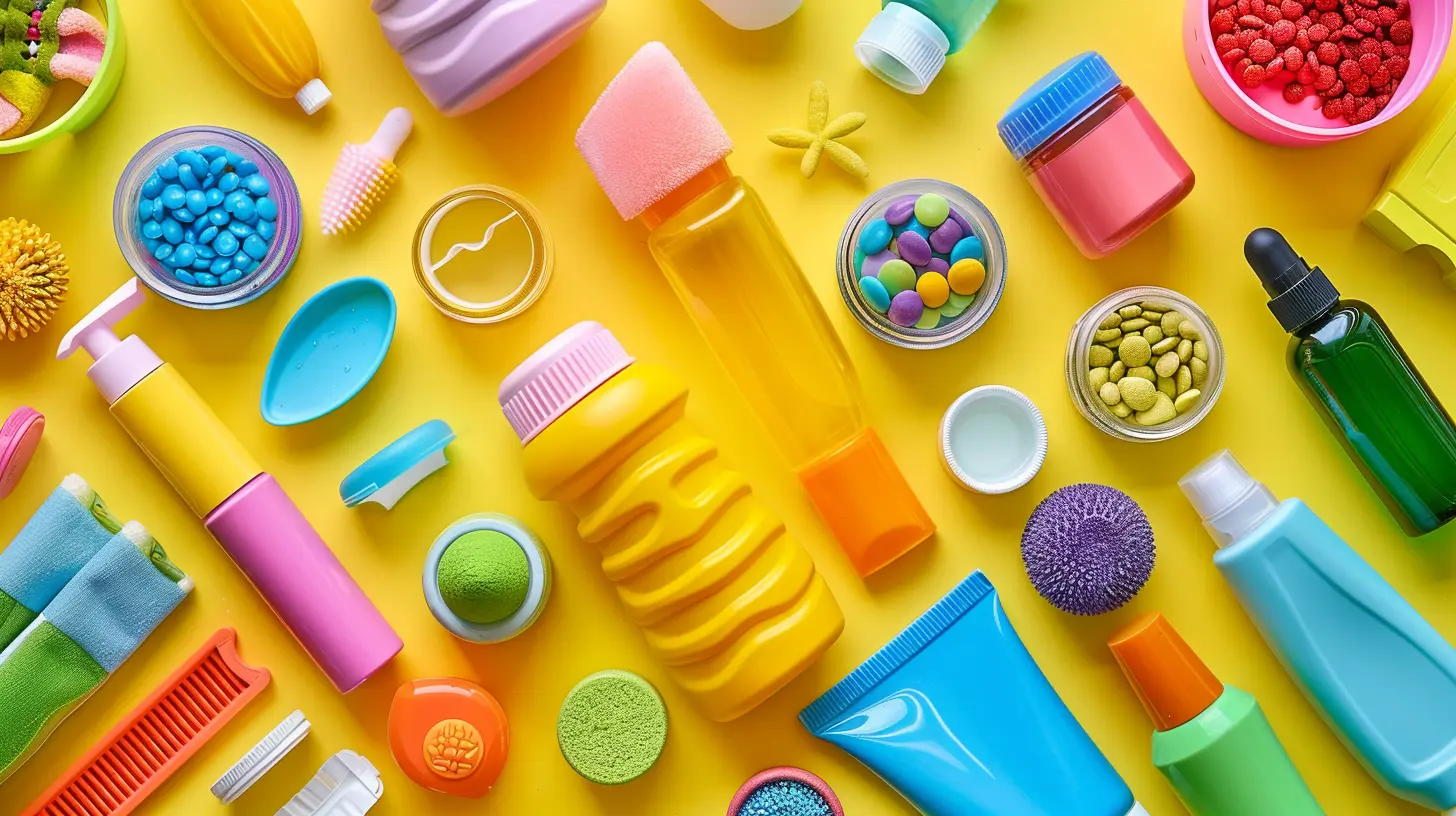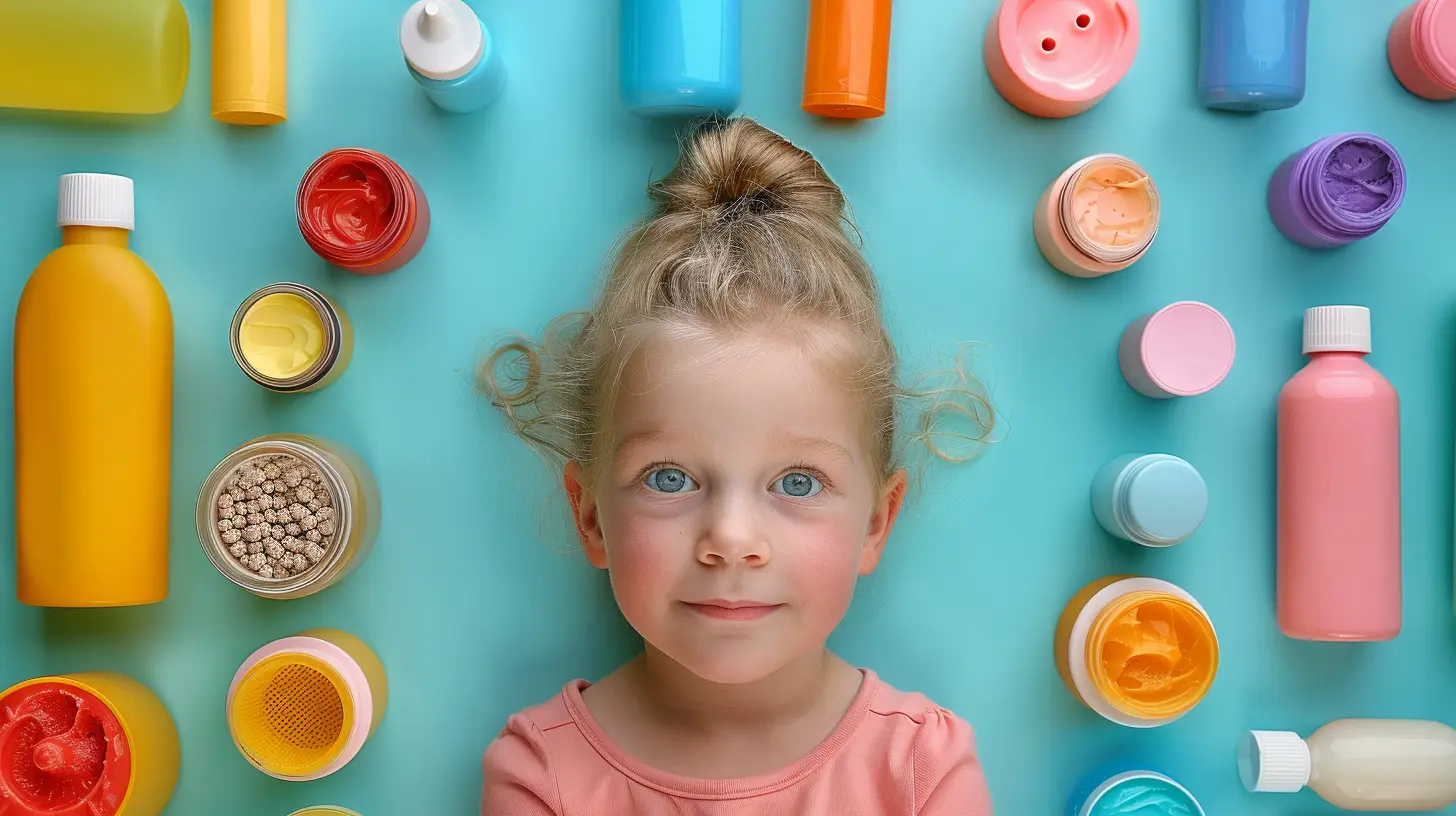How to Identify Potentially Harmful Ingredients in Kids’ Products
19 November 2025
Let’s be real—parenting is already a rollercoaster. Between the sleepless nights, picky eaters, and constant “why” questions, the last thing you need is worrying about what’s in the products your kids use every day. But here’s the kicker—many items marketed for children contain ingredients that aren’t exactly kid-friendly. Yikes, right?
Whether it's baby lotion, shampoo, toothpaste, or even toys—what goes on and around your little one can be just as important as what goes in them. So, how do you cut through the marketing fluff and actually figure out what’s safe?
Grab a cup of coffee (or hide in the pantry like the rest of us), and let’s talk about how to identify potentially harmful ingredients in kids’ products without losing your sanity.
Why You Should Care About Ingredients
Think of your child’s skin like a sponge—it’s more delicate and absorbent than adult skin. What you apply to it can sneak right into their bodies. Their developing brains, organs, and immune systems are way more vulnerable to toxins than ours.Even things that seem harmless, like fragrance or preservatives, can pack a punch—sometimes leading to allergic reactions, hormone disruptions, or long-term health risks. If that sends a chill down your spine, you’re not alone.
Understanding The Labels: Your First Line of Defense
Ever stand in the baby aisle staring at a label wondering if you need a PhD in chemistry just to buy baby wipes? You’re not the only one. Product labels can be intentionally confusing. Here's what to look for:1. Learn the “Dirty Dozen” of Harmful Ingredients
These are the usual suspects—chemicals you’ll want to avoid when shopping for your little one:- Parabens (methylparaben, propylparaben): Preservatives linked to hormone disruption.
- Phthalates: Often hidden under “fragrance;” associated with hormone effects.
- Fragrance/Parfum: A catch-all term that can hide dozens of chemicals.
- Formaldehyde and Formaldehyde-releasers (quaternium-15, DMDM hydantoin): Yikes, these are carcinogens.
- Sodium Lauryl Sulfate (SLS) and Sodium Laureth Sulfate (SLES): Can irritate skin and eyes.
- BPA (Bisphenol-A): Common in plastics, linked to developmental issues.
- Talc (especially if not asbestos-free): May cause respiratory problems and cancer.
- Triclosan: Found in antibacterial products; can mess with hormones.
- Propylene Glycol: A penetration enhancer that can irritate skin.
- Retinyl Palmitate (Vitamin A Palmitate): Can speed up skin damage when exposed to sunlight.
- Synthetic Dyes (FD&C): Derived from petroleum and may be linked to behavioral issues.
- Mineral Oil: A byproduct of petroleum refining that can trap toxins on the skin.
If you spot any of these, it’s time to put that product back on the shelf. You wouldn’t feed your kid junk food every day—same deal here.
2. Beware of Greenwashing
Marketing can be sneaky. Words like “natural,” “gentle,” “hypoallergenic,” and “eco-friendly” aren’t regulated. It’s like calling your kid’s room “clean” after shoving all the toys under the bed—looks good at a glance, but it’s not the whole truth.Look past the front label and flip the bottle. Read the ingredients list. Don’t let fancy fonts and leafy logos fool you.
Decoding Ingredient Names: What Do They Really Mean?
Alright, let’s break this down like we would a toddler tantrum—calmly and with love. :)1. Fragrance = Mystery Mix
If you see the word “fragrance” or “parfum,” run. Okay, not literally, but it’s a red flag. This one word can hide hundreds of chemical compounds under the guise of “trade secrets.” Some of these can cause allergies, asthma, or endocrine disruption.If a product needs to smell nice, look for transparency: “scented with essential oils” or “fragrance-free” is the way to go.
2. The “-Paraben” Family
Parabens are used to prevent mold—but they’ve also been found in breast cancer tumors. Not cool. The most common ones you’ll spot are methylparaben, ethylparaben, butylparaben, and propylparaben.If the ingredient ends in “paraben,” consider it a red flag.
3. PEGs, Sulfates, and Other Sneaky Agents
PEG (polyethylene glycol) compounds can strip skin of moisture and be contaminated with 1,4-dioxane—a probable human carcinogen. Sulfates (SLS, SLES) make products foam but can be super harsh on sensitive skin.A good rule of thumb? If it sounds like it belongs in a high school chemistry lab, double-check it.
Go-To Resources: You Don’t Have to Do It Alone
We know parenting doesn’t come with a manual, but thankfully, ingredient-checking tools kind of do.1. The Environmental Working Group (EWG) Skin Deep Database
Pop in a product or ingredient and get a safety score from 1 to 10. Super helpful and easy to use.2. Think Dirty App
Scan the barcode, and boom! It’ll break down ingredients and explain any concerns in plain English. Major time-saver.3. The Good Guide
Another app that rates personal care, household, and kids’ products on a scale of 0–10 based on health impacts.Use these like your parenting GPS—navigating the ingredient jungle just got a lot easier.
Switching to Safer Alternatives
So, what if you’ve just gone through your bathroom and realized everything needs to go? Deep breath—don’t panic. You don’t have to dump everything overnight.1. Prioritize the Most Frequently Used Products
Start with what touches your child's skin daily: soap, shampoo, lotion, and sunscreen. Then move to less frequent items like bubble bath, bug spray, and diaper cream.2. Go Simple
You don’t need a 10-step routine for your baby. Fewer products = fewer chemicals. Look for things with short, easy-to-read ingredient lists.3. DIY When You Can
Think coconut oil as a moisturizer (yep, straight from your pantry), or oatmeal baths for skin-soothing. Simple, natural, and cheap—win-win-win.Common Myths (And Why They’re Wrong)
Let’s debunk a few things before we wrap up:❌ “If it’s sold in stores, it must be safe.”
Unfortunately, not always. The US has fewer restrictions on product ingredients than many other countries. It’s up to us, as parents, to make informed choices.❌ “Natural means non-toxic.”
Not quite. Arsenic is natural too, right? Always check the label—don’t rely on buzzwords.❌ “It worked for my other kid, so it's fine.”
Every child is different. What’s okay for one might trigger eczema or allergies in another. Trust your gut and your instincts.Final Thought: It’s About Progress, Not Perfection
Look, no one’s expecting you to live in a bubble or become a full-blown chemist overnight. You’re doing your best, and that counts for a lot. The goal isn’t to be perfect—it’s to be informed.By taking small, steady steps to reduce exposure to harmful ingredients, you’re already doing something amazing. Your child’s future self will thank you. Promise.
So next time you're browsing the baby aisle or checking out a new brand online, you’ll know exactly what to look for—and what to avoid. You’ve got this.
Quick Checklist: Red Flags in Kids’ Products
Here’s a handy cheat sheet you can screenshot for your next shopping trip:✅ Avoid:
- Parabens
- Phthalates
- Fragrance/Parfum
- Formaldehyde
- SLS/SLES
- BPA
- Talc (unless certified asbestos-free)
- Triclosan
- PEG compounds
- Synthetic dyes
‚úÖ Look for:
- Short ingredient lists
- Plant-based, organic certifications
- Fragrance-free or essential oil-based scent
- Transparency from brands
all images in this post were generated using AI tools
Category:
Child SafetyAuthor:

Liam Huffman

